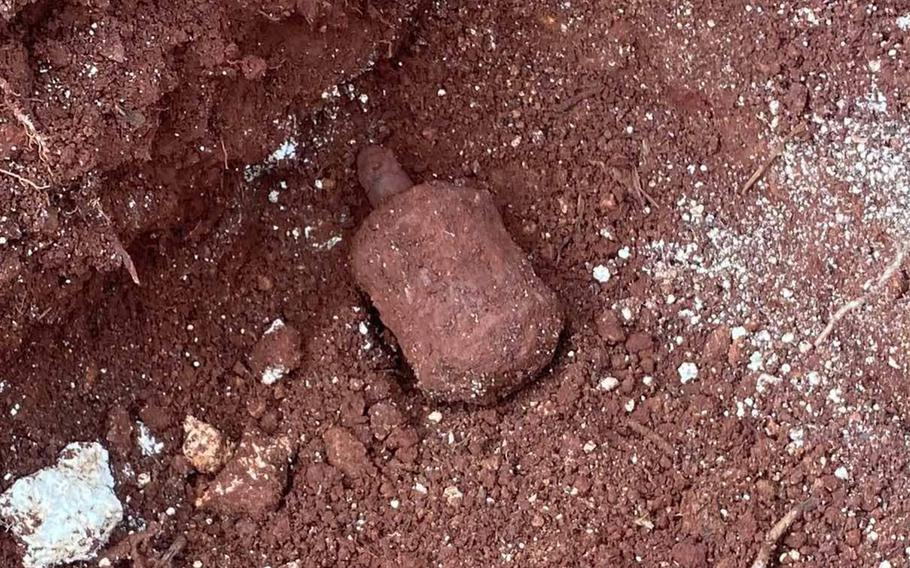
Explosive ordnance technicians with the 36th Wing removed a World War II-era Japanese grenade from a construction site on Andersen Air Force Base, Guam, on Aug. 21, 2024. (U.S. Air Force)
Explosive ordnance technicians recently removed a World War II-era Japanese grenade from a construction site at Andersen Air Force Base, Guam.
An airman and a Marine with the 36th Civil Engineer Squadron Explosive Ordnance Disposal team removed a Type 97, standard-issue Japanese hand grenade from Munition Storage Area 1 on Aug. 21, the 36th Wing said in an unsigned email Tuesday.
“[The] general public was not in danger … due to the quick actions of the Andersen EOD team,” the message said.
The unexploded grenade was found by “the Materials of Explosive Concern clearance contractor on a construction site,” the email said.
The wing on Wednesday morning acknowledged a follow-up question about what was done with the grenade, but did not immediately provide a response.
“EOD responded to a UXO at MSA 1. EOD rendered safe, removed 1x Type 97 Japanese Hand Grenade. ‘Murica!” 36th Wing commander Brig. Gen. Thomas Palenske wrote Monday on his personal Facebook page.
The Type 97 was the standardized fragmentation hand grenade used by Japanese forces during World War II, including during two battles that took place on Guam in 1941 and 1944.
The first battle of Guam took place Dec. 8-10, 1941. A small, lightly armed garrison of sailors and Marines was overrun by a larger Japanese landing force, and Japan took over the island just a week after the attack on Pearl Harbor.
The second battle of Guam, from July 21 to Aug. 10, 1944, was part of a larger island campaign, Operation Forager. Approximately 59,000 U.S. service members and a large number of native Chamorros faced about 18,000 Japanese.
About 3,000 U.S. troops were killed. While the battle officially ended Aug. 10, some 7,500 Japanese troops remained on the island, and the last was discovered on Jan. 24, 1972.